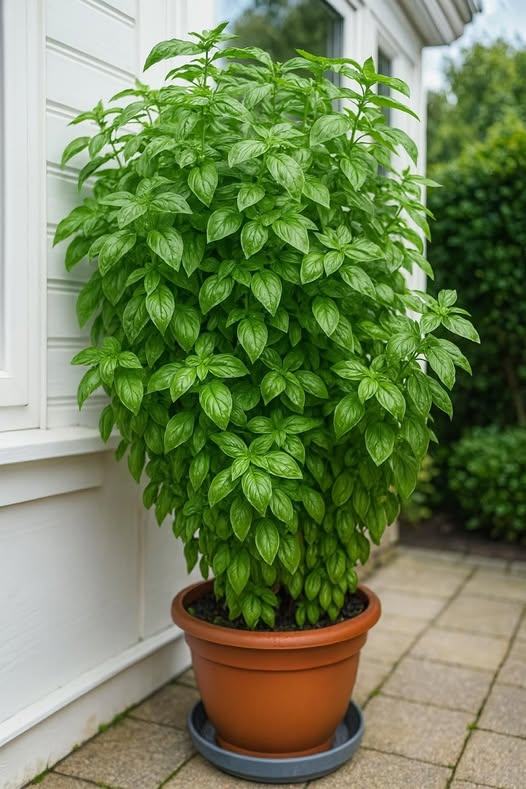While basil is relatively easy to grow, it is susceptible to a few pests and fungal issues.
Aphids, whiteflies, and spider mites may infest basil. Spray with neem oil or insecticidal soap.
Fungal diseases like downy mildew and root rot can be prevented with good air circulation and proper watering.
Remove yellowing or damaged leaves and inspect plants regularly.
Keep the area around the container clean and dry, and avoid overhead watering whenever possible.
Step 10: Extend the Harvest
Basil is an annual in most climates, but you can prolong your harvest with a few techniques:
Grow indoors on a sunny windowsill once temperatures drop below 50°F.
Succession planting: Start a new basil plant every 4–6 weeks for a continuous supply.
Overwintering: Take stem cuttings in late summer and root them in water indoors for fresh basil through winter.
Basil grown indoors still needs plenty of light and consistent care to produce well.
Growing big basil in a pot is a simple yet satisfying gardening project.
With the right variety, soil, sun, and care, you can produce robust, bushy basil plants bursting with flavor.
Whether you’re using it for pesto, salads, sauces, or garnishing dishes, there’s nothing quite like harvesting your own fresh basil.
Follow the steps in this guide to transform a single pot into a thriving basil plant that keeps giving all season long.
By understanding basil’s specific needs and responding with consistent care, even novice gardeners can enjoy healthy, vigorous basil plants in containers.

